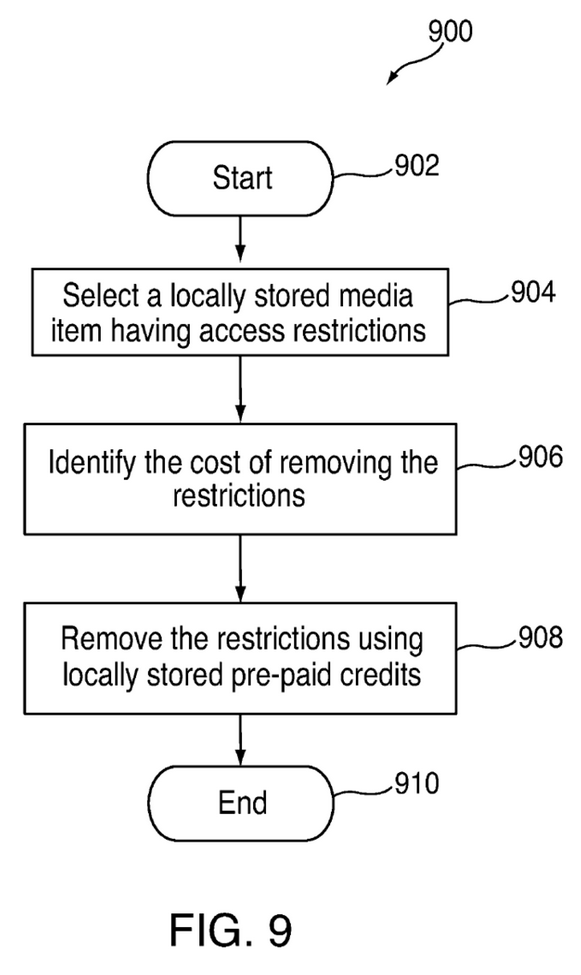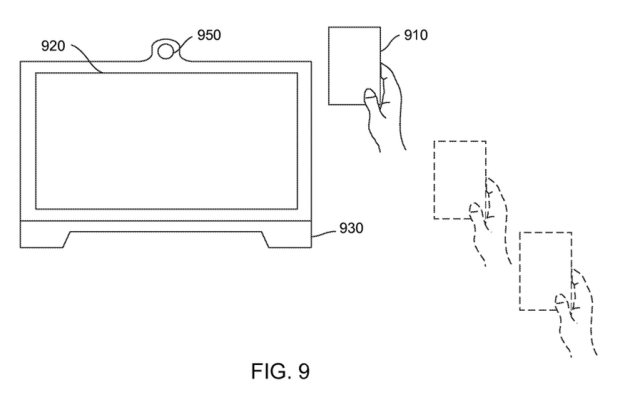Transferring files from an iPhone to a Mac is still a bit more of a hassle than I’d like it to be. Most of the time I resort to email. But a new patent from Apple (via AppleInsider) describes a feature that would make it as easy as bringing the two together in close proximity. A second patent published by the USPTO also describes a means by which iTunes content could be purchased by a user even when they don’t have an active Internet connection.
The first patent describes a system where a portable device like an iPhone could be detected automatically by a receiving device, i.e., a Mac, and then initiate a transfer once they come within range via Bluetooth or Wi-Fi, should it determine that’s what the user wants to happen. This isn’t just about initiating something like a wireless sync, however: it’s much more interesting because it’s a contextually aware system, which could, for instance, recognize when you wanted to insert a photo from your iPhone into a text document and do that automatically.
Using NFC, Bluetooth or cameras in either device, it would recognize when a user brings one closer to the other, and match that up with what’s going on in the OS to determine what should be transferred, and to where. If it actually performed as described, this would eliminate a ton of steps from my daily workflow for inserting screenshots into posts, for instance, and would make any kind of process that involves using media captured or stored on a smartphone or tablet in a desktop setting about a thousand times easier.
The nice thing about this patent is that all the parts are already in place; Bluetooth and other tech are already used to determine device proximity, as demonstrated by the Bump app for mobile devices, which allows transfer of content from one smartphone to another. The trick would be in making sure that the intelligent, contextual aspects of the process work without a hitch, but it’s a promising area of inquiry by Apple that could turn into a genuinely helpful shipping feature.
Another patent granted today describes a system for making offline purchases of media and other content. iTunes needs users to be connected to make purchases currently, both to authorize the transaction and to transfer the actual content itself. But this system would allow users to retain offline credits via pre-loaded iTunes accounts. It also includes a provision for gathering relevant content based on a user’s tastes and library in order to store recommendations offline, waiting to be unlocked by purchases made using credits.
 It’s a system that first and foremost benefits Apple, by giving it the opportunity to capitalize on shopping opportunities in situations where it has previously been at a disadvantage. While travelling, for instance, a user might desire a new album or e-book, but either doesn’t have roaming data or might not have Internet access, say during a flight. That’s lost revenue without any kind of offline store access.
It’s a system that first and foremost benefits Apple, by giving it the opportunity to capitalize on shopping opportunities in situations where it has previously been at a disadvantage. While travelling, for instance, a user might desire a new album or e-book, but either doesn’t have roaming data or might not have Internet access, say during a flight. That’s lost revenue without any kind of offline store access.
There are hurdles, including the fact that it involves occupying a certain percentage of a user device’s storage. But if a device could automatically free up that space should a user request it for other purposes, there’s no harm done.
Both of these patents involve making existing technologies work in new ways, in concert with one another. There may be few technical barriers to their implementation, but that doesn’t mean we’ll see them soon. Still, as innovative new features that could add pizazz to upcoming iOS or OS X releases, they’re still worth watching.
